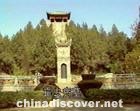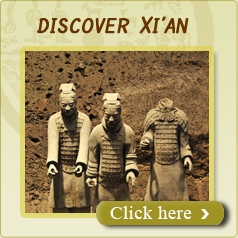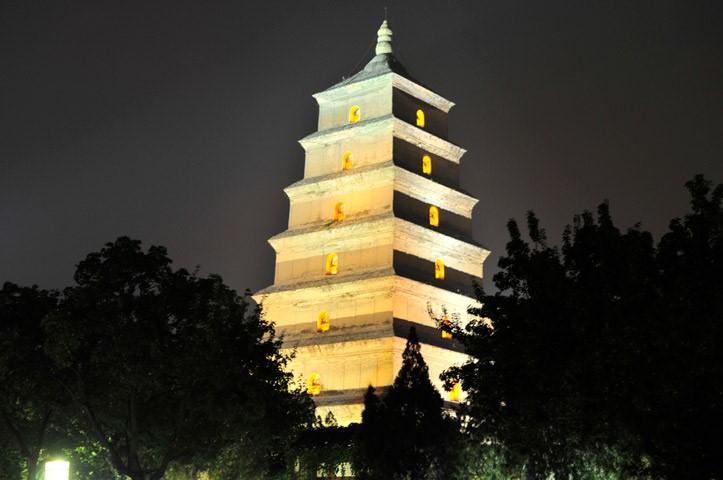Maoling, the mausoleum of Emperor Wudi

Maoling, the mausoleum of Emperor Wudi of the Western Han Dynasty is located about 9 kilometers southeast of Xingping County and 45kilometers from Xi'an. The mausoleum was in Maoxiang Town in Huaili County, during the Western Han Dynasty; hence the name Maoling (the mausoleum at Maoxiang).
Emperor Wudi (140-87 B.C.), also called Liu Che, was the fifth emperor of the Western Han Dynasty. At the age of 7, he was made the crown prince. He came to the throne at 16 and was in power for 54 years. He was the emperor for the longest period in the history of China. Emperor Qin Shihuang and Emperor Han Wudi are usually mentioned together at the same time. This is because the autocratic state of centralized power in the feudal society was established by Emperor Qin Shihuang, but it was thoroughly consolidated by Emperor Han Wudi. In order to centralize the power under the feudal imperial court, Emperor Han Wudi deprived every dependent state of their titles of nobility by means of various pretexts. For example, in 112 B.C. he revoked the titles of 106 princes with the excuse that the gold they offered as an oblation to their ancestors was not pure or short of measure. Before the reign of Wudi, the ministers of the imperial court were mostly those who had rendered outstanding service, and their sons and younger brothers. Even ordinary officials mostly came from wealthy, powerful or noble families.
However, Emperor Wudi did not stick to the old rule. On the contrary, he was unconstrained and broad-minded in choosing talents. He even established the Imperial College from which to train and choose qualified officials. These measures were adopted to strengthen further the system of centralization of the feudal autocracy. To bring the financial and economic right sunder the control of the imperial court, Emperor Han Wudi announced that coin-minting was forbidden among the people and the local governments, and only the coins minted by the central government could be in circulation. Metallurgy and salt processing were also forbidden among the people. The business run by the government enjoyed the exclusive right to sell salt and iron. Meanwhile the government levied a property tax on industrialists and businessmen and so the income of the court increased greatly. The Western Han Dynasty became unprecedentedly rich and powerful, centralization strengthened and its feudal economy flourished. Emperor Han Wudi launched three important battles, and defeated its formidable enemy, the Hun invaders on the northern border. He also sent men, more than once, to establish relations with the Western Regions.
The well-known Silk Road was opened during his reign. Emperor Han Wudi was not only a statesman but also a strategist of great talent and tactics, and a lot of poetry and music as well. He setup an organization called " Yuefu ", an official conservatory for collecting and composing folk songs and ballads and for training musicians. It was because of this that many folk songs in the Han Dynasty were preserved and passed down through the ages till today. Yuefu poems had a great influence on later periods. Poets like Li Bai, Du Fu and Bai Juyi in the Tang Dynasty, used to imitate and develop the style of the Yuefu poems.
In order to consolidate feudal domination and to further achieve the unity of academic thought, Emperor Han Wudi accepted the Confucius, Dong Zhongru's proposal of "rejecting the other schools of thought and respecting only Confucianism". Thus the period of "contention between a hundred schools of thought" came to an end. From then on, Confucian thought gradually developed into an orthodox theory and had far-reaching influence on the history of China.
Emperor Han Wudi's great talent and bold strategy led the Han Empire to its prime. The feudal society of China made great developments in politics, economy, military affairs, and culture. China began to make a name for itself in the world as a highly civilized, wealthy and powerful nation.
At the age of 71, Wudi died and was buried at the Maoling Mausoleum. His mausoleum was constructed in the shape of a four-sided dipper, 46meters high and 240 meters long. Around the mausoleum there are vestiges of a wall that surrounded it. The wall was 400 meters long and its base was 5.8 meters wide. Today the vestiges of the eastern, western and northern watchtowers can be clearly seen. Among the tombs of the Western Han Dynasty, the Maoling Mausoleum was the largest in dimension, took the longest time to be built and had the richest funeral objects. Emperor Han Wudi was on the throne for 54 years, yet the construction of the Maoling Mausoleum took 53 years to be completed. By the time he died, the trees at the mausoleum had grown so large that one could hardly get his arms around them. According to historical records, one third of the yearly taxes and tributes of the state went into the construction of the Maoling Mausoleum and the purchase of funeral objects that the tomb could hardly hold even before his death. So after the Eastern Han Dynasty, the Maoling Mausoleum became the target of grave robbers.
During the Western Han Dynasty in the area around the Maoling cemetery there were a lot of dwelling houses built for high officials and noble lords. Inside the cemetery there were many places and houses inhabited by tomb keepers and palace maids. The cleaners and gardeners alone numbered more than 5,000. The town of Maoling County was purposely built to the southeast of the mausoleum. Generals, officials, noblemen and the rich lived in the town and numbered over 277,000. At that time, even high officials and noble lords felt great honor if they could move near to the emperor's tomb to live.
Through the archaeological research of both the Maoling cemetery and the remains of the town of Maoling County, many things have been discovered there, including several remains of construction sites, pentagon water pipes, cobbled roads and other building installations from the Han Dynasty. There are over 20 satellite tombs of high officials and noble relatives around the Maoling Mausoleum. The famous young general Huo Qubing who, on six occasions, fought the Hun invaders bravely, was buried on the eastern side of the mausoleum one kilometer away from the main tomb. In 1978, the Maoling Mausoleum was set up. Eave tiles, Han bricks, pottery figures and other valuable historical relics that have been excavated at the Maoling Mausoleum as well as the giant stone carvings that were originally placed in front of Huo Qubing' tomb, are now on display there.





